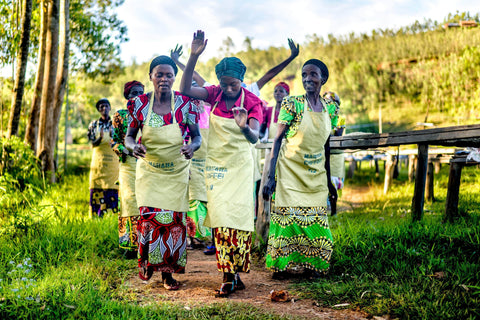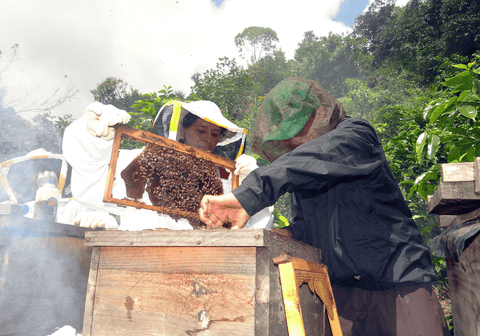TRAINING ON COFFEE PROCESSING, DRYING AND STORAGE
After coffee cherries are picked, they need to be dried and processed. Even a ripe, red, perfectly picked coffee cherry can lose all its positive attributes if processed or dried incorrectly. Sweetness disappears or, worse, turns into astringency, bitterness and harshness.
In Yayu, Ethiopia, we have financially supported the cooperatives in building more drying beds. Limited capacity of drying beds is often resolved by placing more coffee on the same bed and drying thicker layers of coffee. This negatively affects the drying process and damages the final taste and quality of the coffee. During the harvest and processing season we visit the cooperatives and provide training on correct processing, drying and storage.

TRAINING ON COFFEE PICKING TO IMPROVE COFFEE QUALITY
Coffee is a tree, and coffee beans are the seeds of a coffee cherry. These cherries are hand-picked, often by seasonal workers, on difficult-to-reach high-altitude coffee growing areas. It is demanding and important work: picking only perfectly ripe coffee cherries can dramatically improve coffee quality.
Training of coffee pickers is therefore crucial in helping increase the quality of the coffee. There’s no classroom training – we go into the field during the harvest and
provide pickers with practical examples and training. We explain the astounding difference between a perfectly ripened coffee cherry and an unripe one, how an unripe coffee cherry will lack all the sweetness and juiciness of a ripe cherry. We then explain that similar characteristics will show up in the coffee taste: bitter, harsh, astringent and hay-like flavours.
By showing coffee pickers that the same number of unripe cherries weighs less than ripe cherries, they can also see that it directly benefits them. Coffee pickers often get paid by weight, and you need to pick nearly twice the number of unripe cherries to reach the same weight as ripe ones.


